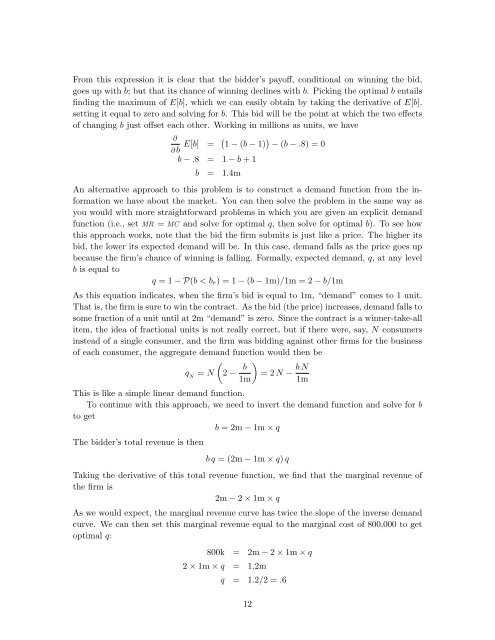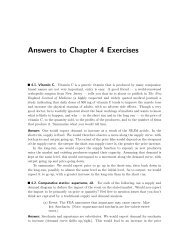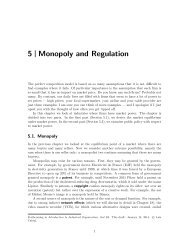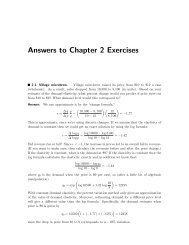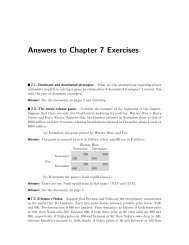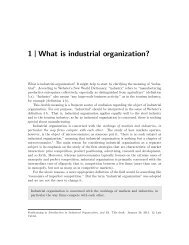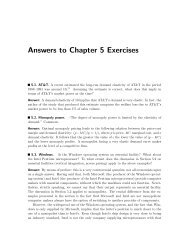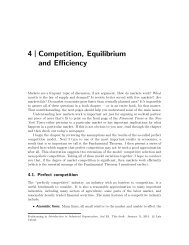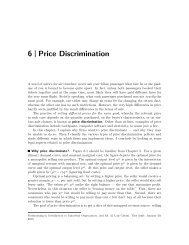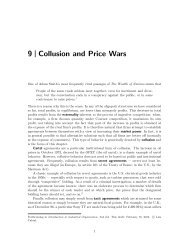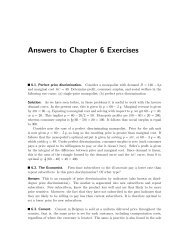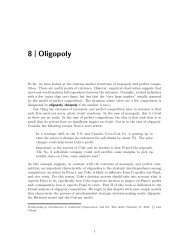Answers to Chapter 3 Exercises - Luiscabral.net
Answers to Chapter 3 Exercises - Luiscabral.net
Answers to Chapter 3 Exercises - Luiscabral.net
- No tags were found...
You also want an ePaper? Increase the reach of your titles
YUMPU automatically turns print PDFs into web optimized ePapers that Google loves.
From this expression it is clear that the bidder’s payo↵, conditional on winning the bid,goes up with b; but that its chance of winning declines with b. Picking the optimal b entailsfinding the maximum of E[b], which we can easily obtain by taking the derivative of E[b],setting it equal <strong>to</strong> zero and solving for b. This bid will be the point at which the two e↵ectsof changing b just o↵set each other. Working in millions as units, we have@E[b] = 1 (b 1) (b .8) = 0@ bb .8 = 1 b +1b = 1.4mAn alternative approach <strong>to</strong> this problem is <strong>to</strong> construct a demand function from the informationwe have about the market. You can then solve the problem in the same way asyou would with more straightforward problems in which you are given an explicit demandfunction (i.e., set MR = MC and solve for optimal q, then solve for optimal b). To see howthis approach works, note that the bid the firm submits is just like a price. The higher itsbid, the lower its expected demand will be. In this case, demand falls as the price goes upbecause the firm’s chance of winning is falling. Formally, expected demand, q, at any levelb is equal <strong>to</strong>q =1 P(b


